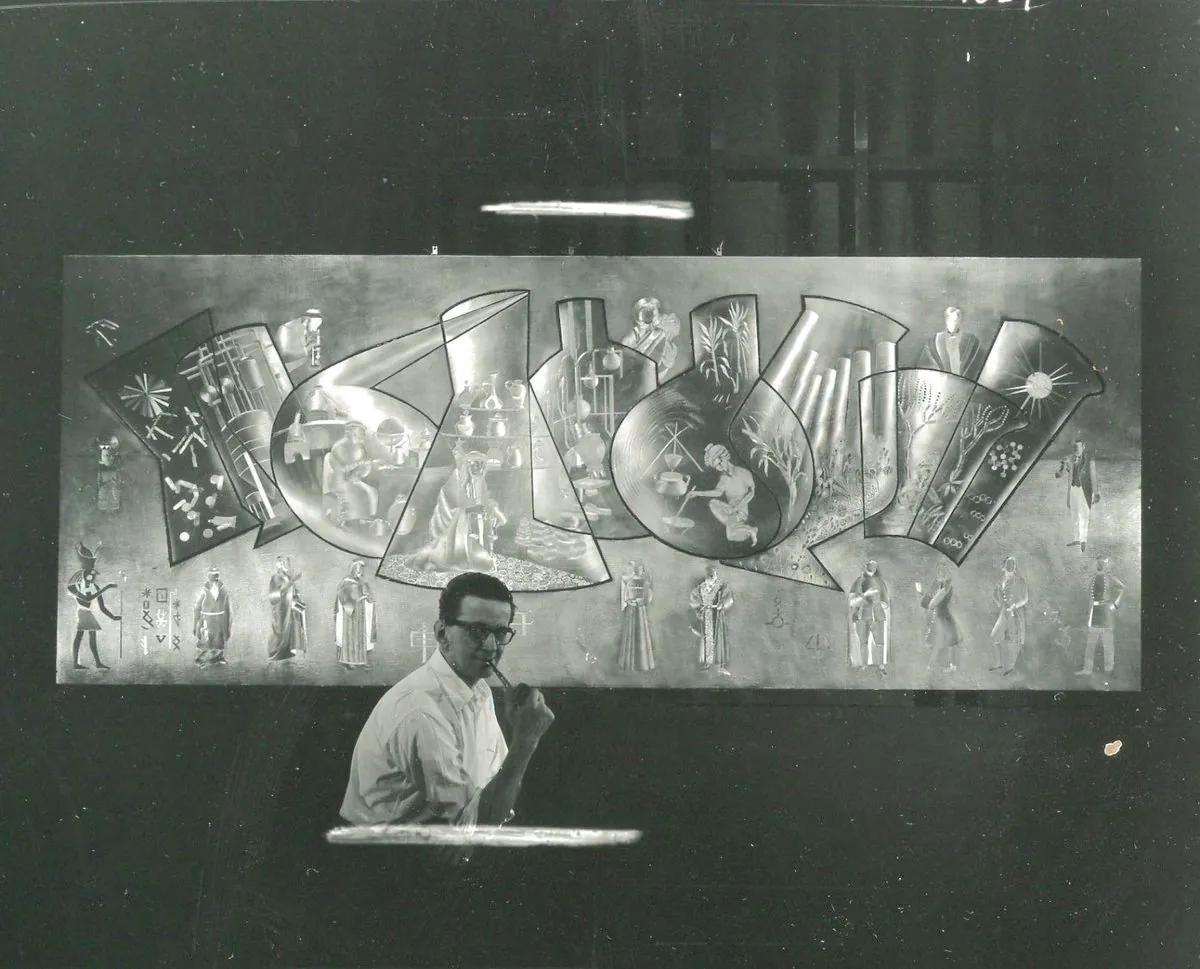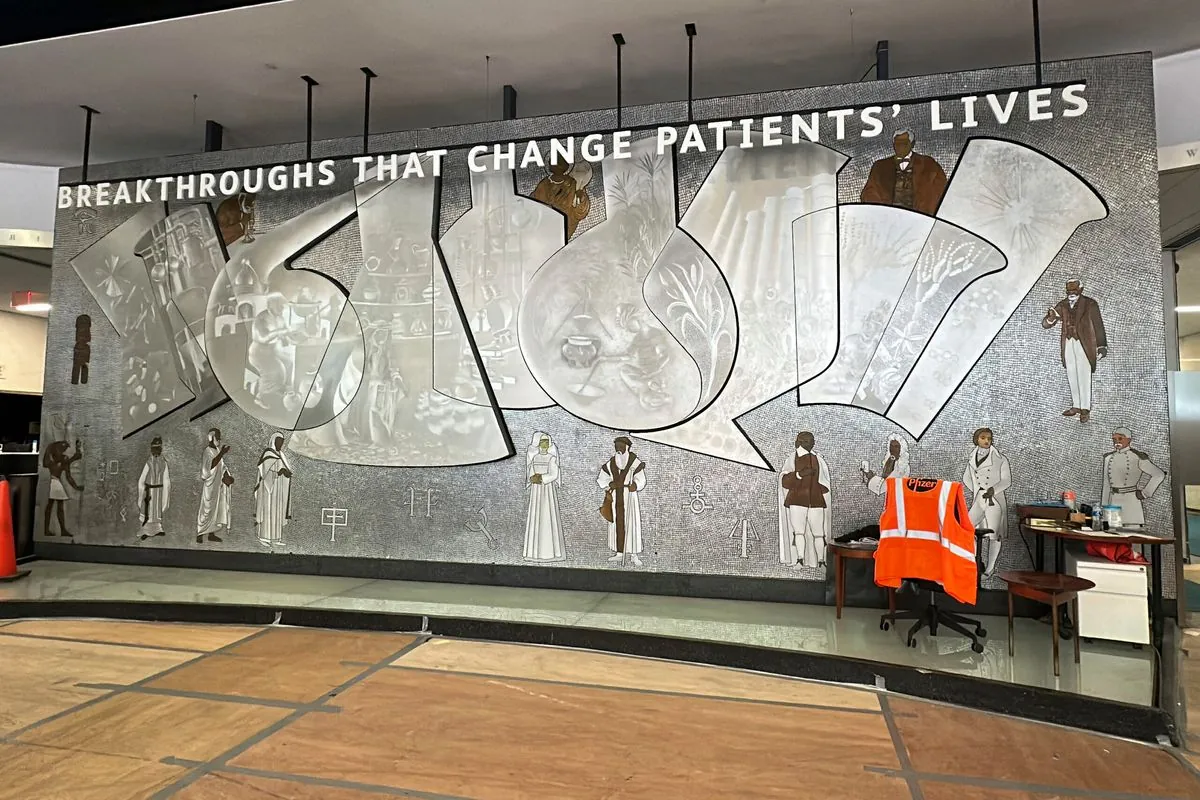Pfizer's Historic Medical Mural Faces Uncertain Future in NYC
A 60-year-old mural in Pfizer's former NYC headquarters is at risk of dismantling. Conservationists race against time to find a new home for this massive artwork depicting medical history.

In a race against time, conservationists are scrambling to save a significant piece of pharmaceutical and artistic history. A monumental mural, "Medical Research Through the Ages," which has adorned the lobby of Pfizer's original New York City headquarters for over six decades, faces an uncertain future as the building undergoes conversion into residential apartments.
The massive metal and tile mosaic, created by Greek American artist Nikos Bel-Jon, spans 40 feet wide and 18 feet high. It has been a prominent feature of the pharmaceutical giant's midtown Manhattan office since the 1960s, showcasing ancient and modern figures in medicine alongside laboratory equipment.
As Pfizer moved its headquarters to a shared office space last year, the fate of this artistic masterpiece hangs in the balance. The new building owners have set a move-out date for the mural as soon as September 10, 2024, leaving conservationists and the artist's family with mere days to secure a new home for the artwork.
Art historian and urban planner Andrew Cronson envisions an educational future for the mural, suggesting placement on a hospital campus, school, or as part of a public art program. However, the relocation process presents significant challenges, with estimated costs ranging from $20,000 to $50,000 for removal alone.

Pfizer, founded in 1849 by German-American cousins Charles Pfizer and Charles F. Erhart, has a rich history intertwined with medical advancements. The company played a crucial role in mass-producing penicillin during World War II and recently developed one of the first COVID-19 vaccines in collaboration with BioNTech.
The mural's potential loss highlights the broader issue of preserving corporate art. Rhea Bel-Jon Calkins, the artist's youngest daughter, maintains a record of her father's 42 large-scale metal murals, with only about a dozen confirmed to still exist. She recalls the original multicolored lighting scheme that gave the artwork a dynamic quality, now lost in its current monochromatic state.
"But then you realize 20 or 30 years from then how great it was."
While the mural may lack significant commercial value, its historical importance cannot be overstated. As Pfizer's annual revenue exceeded $100 billion for the first time in 2022, the company's decision to prioritize "patient-related" expenditures over preserving this artistic legacy raises questions about corporate responsibility towards cultural heritage.
The clock is ticking for this unique piece of art that bridges the worlds of science and creativity. As workers continue to gut the building, the hope remains that a patron or institution will step forward to ensure this testament to medical progress finds a new home where it can continue to inspire future generations.


































